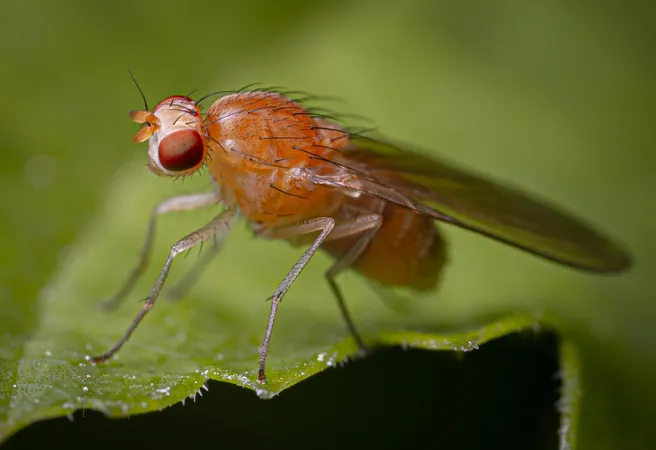
Shocking Discovery Reveals Hidden Asymmetry in Fruit Fly Reproductive Organs!
2025-09-16
Author: Nur
In a groundbreaking study from Cornell University, a team of researchers, led by Dawn Chen, uncovered a startling asymmetry in the spermathecae—organs responsible for storing sperm in female fruit flies. These organs, which are visually identical, showed surprisingly varied sperm counts, sparking a multi-university investigation into the evolutionary significance of such asymmetries.
This intriguing phenomenon isn't just limited to fruit flies; it's part of a broader pattern seen across various species in nature. For example, consider the distinct claws of fiddler crabs or the one-functionality of bird ovaries. The findings, published in the prestigious Proceedings of the National Academy of Sciences, open new doors to understanding how these differences can affect reproductive success.
Collaborating with experts from New York University and the Hebrew University of Jerusalem, the study revealed that, despite their identical appearance, the two spermathecae serve unique functions and stem from different cellular lineages. Such specialization may provide evolutionary advantages, a hypothesis supported by senior co-author Andrew Clark, who noted, "The idea that these two spermathecae might be able to confer some advantage if they have different functions is almost inevitable."
Dawn Chen's initial research focused on sperm competition, a critical aspect of fruit fly mating behavior, where females can mate with multiple males daily. Through meticulous counting, they surprisingly discovered that sperm storage and release rates were significantly different across the two spermathecae.
Veteran researcher Mariana Wolfner expressed her astonishment at the findings: "When the statistics showed marked differences between the spermathecae, it was shocking to us at the time." This discovery challenges traditional views on sperm displacement and female manipulative strategies in controlling paternity.
Further investigations revealed that not only do these organs operate differently, but they also develop from entirely distinct cellular origins, as uncovered by Mark Siegal's innovative G-TRACE genetic technique. This technique highlighted that one spermatheca derived from cells expressing the gene 'wingless,' while the other stemmed from cells expressing 'engrailed,' two genes that play key roles in biological processes from insects to humans.
Additionally, expert Yael Heifetz discovered size and secretory activity differences between the two spermathecae, adding another layer to this remarkable findings. With contributions from doctoral student Jonathon Thomalla and postdoctoral researcher Yassi Hafezi, this multifaceted research deepens our understanding of reproductive strategies in fruit flies, potentially reshaping how we view asymmetry in biological systems.



 Brasil (PT)
Brasil (PT)
 Canada (EN)
Canada (EN)
 Chile (ES)
Chile (ES)
 Česko (CS)
Česko (CS)
 대한민국 (KO)
대한민국 (KO)
 España (ES)
España (ES)
 France (FR)
France (FR)
 Hong Kong (EN)
Hong Kong (EN)
 Italia (IT)
Italia (IT)
 日本 (JA)
日本 (JA)
 Magyarország (HU)
Magyarország (HU)
 Norge (NO)
Norge (NO)
 Polska (PL)
Polska (PL)
 Schweiz (DE)
Schweiz (DE)
 Singapore (EN)
Singapore (EN)
 Sverige (SV)
Sverige (SV)
 Suomi (FI)
Suomi (FI)
 Türkiye (TR)
Türkiye (TR)
 الإمارات العربية المتحدة (AR)
الإمارات العربية المتحدة (AR)